Introduction
Melatonin, a hormone essential for regulating sleep-wake cycles, experiences notable changes throughout different life stages. From infancy to older adulthood, melatonin production evolves, influencing sleep patterns and quality. Recent studies have highlighted a significant rise in melatonin usage among children, with parents increasingly turning to this supplement to address sleep issues.
However, the long-term effects of melatonin use in children remain unclear, necessitating a cautious approach. This article delves into how melatonin production changes with age, general guidelines for melatonin dosage, safety considerations, potential side effects, and the importance of consulting healthcare professionals before starting melatonin. Understanding these aspects can empower parents to make informed decisions about their child's sleep health.
How Melatonin Production Changes with Age
Melatonin, a hormone integral to regulating sleep-wake cycles, undergoes significant changes throughout different life stages. In infants, hormone levels are initially low but steadily rise within the first few months, assisting in the establishment of regular patterns of rest. By childhood, the production of this hormone reaches its highest level during the night, reinforcing a consistent rest routine. As youngsters move into their teenage years, they frequently undergo a change in hormone production, resulting in delayed onset of rest periods—a typical event during adolescence. In adulthood, hormone levels gradually decrease, continuing into older age, which can impact rest quality and duration.
Research published in JAMA Pediatrics highlights a substantial rise in the use of this supplement among youngsters in the US, with parents turning to it to address sleep issues. The research, which examined guardians of 993 youngsters aged one to 14, discovered that the use of the supplement has become more widespread over the years. For example, preschool-aged individuals utilized a sleep aid for a median of 12 months, elementary school students for 18 months, and pre-adolescents for 21 months. Furthermore, an online questionnaire conducted by the American Academy of Sleep Medicine showed that about 46% of parents have given a sleep aid to youngsters under 13 to help them relax.
The rise in pediatric use of sleep aids can be partly credited to growing sleep issues, frequently associated with elevated levels of mental health disorders and more screen time. According to the National Institutes of Health, intake of the hormone among young people and teenagers has increased from about 1% to nearly 20% over the past few decades. Parents reported their offspring consuming sleep aids two to five days each week on average, with many using it every day.
'Despite its increasing popularity, specialists advise caution, stressing that long-term impacts of regular melatonin use in young individuals are not well understood, and more comprehensive studies are necessary to evaluate its safety and effectiveness.'.
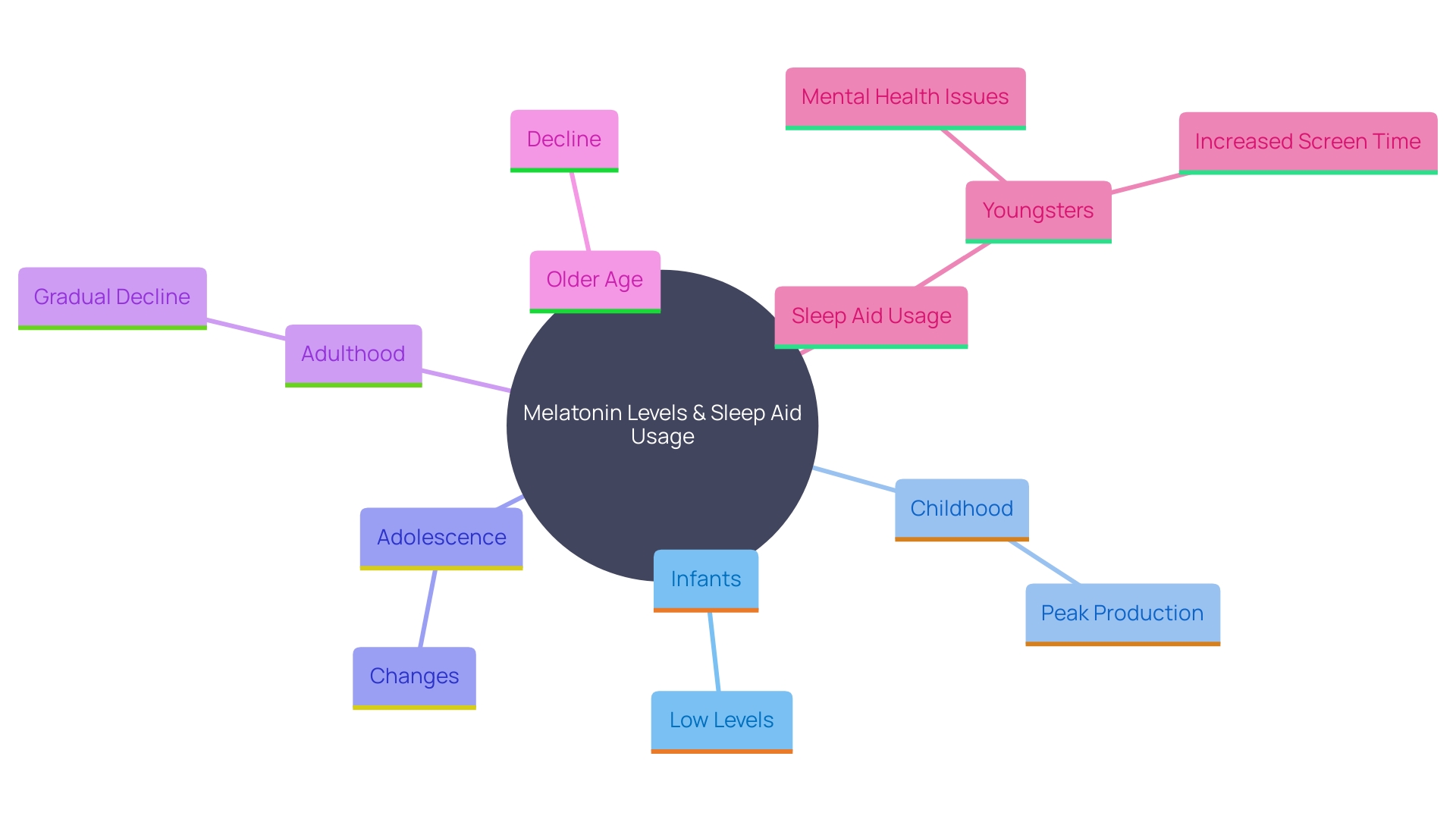
General Guidelines for Melatonin Dosage
Melatonin dosages can vary significantly based on age and individual needs. For the majority of youngsters, a dosage of 0.5 to 5 mg consumed 30 minutes prior to bedtime is generally advised, based on their age and particular rest-related concerns. Research has shown that the median dose for preschoolers is around 0.5 mg, 1 mg for school-age kids, and 2 mg for preteens. It's crucial to start with the lowest effective dose and adjust as necessary, monitoring for efficacy and side effects.
For adults, managing sleep disorders often requires higher doses, ranging from 1 to 10 mg. It's crucial to take into account that the use of this supplement has increased, with approximately 46% of parents reportedly administering it to minors under 13. The American Academy of Pediatrics recommends utilizing this sleep aid solely as a temporary measure to assist young ones in obtaining rest.
A report released in JAMA Pediatrics suggested that guardians were using a sleep aid consistently, with preschool-aged individuals taking it for a median of 12 months, elementary school students for 18 months, and preteens for 21 months. However, the study's authors warn that the long-term safety and effectiveness of this substance in young individuals require additional investigation.
The Centers for Disease Control and Prevention reported a 530% increase in ingestion calls to poison control centers from 2012 to 2021, primarily accidental, with over 84% of minors showing no symptoms. This rise underscores the importance of careful dosage and monitoring.
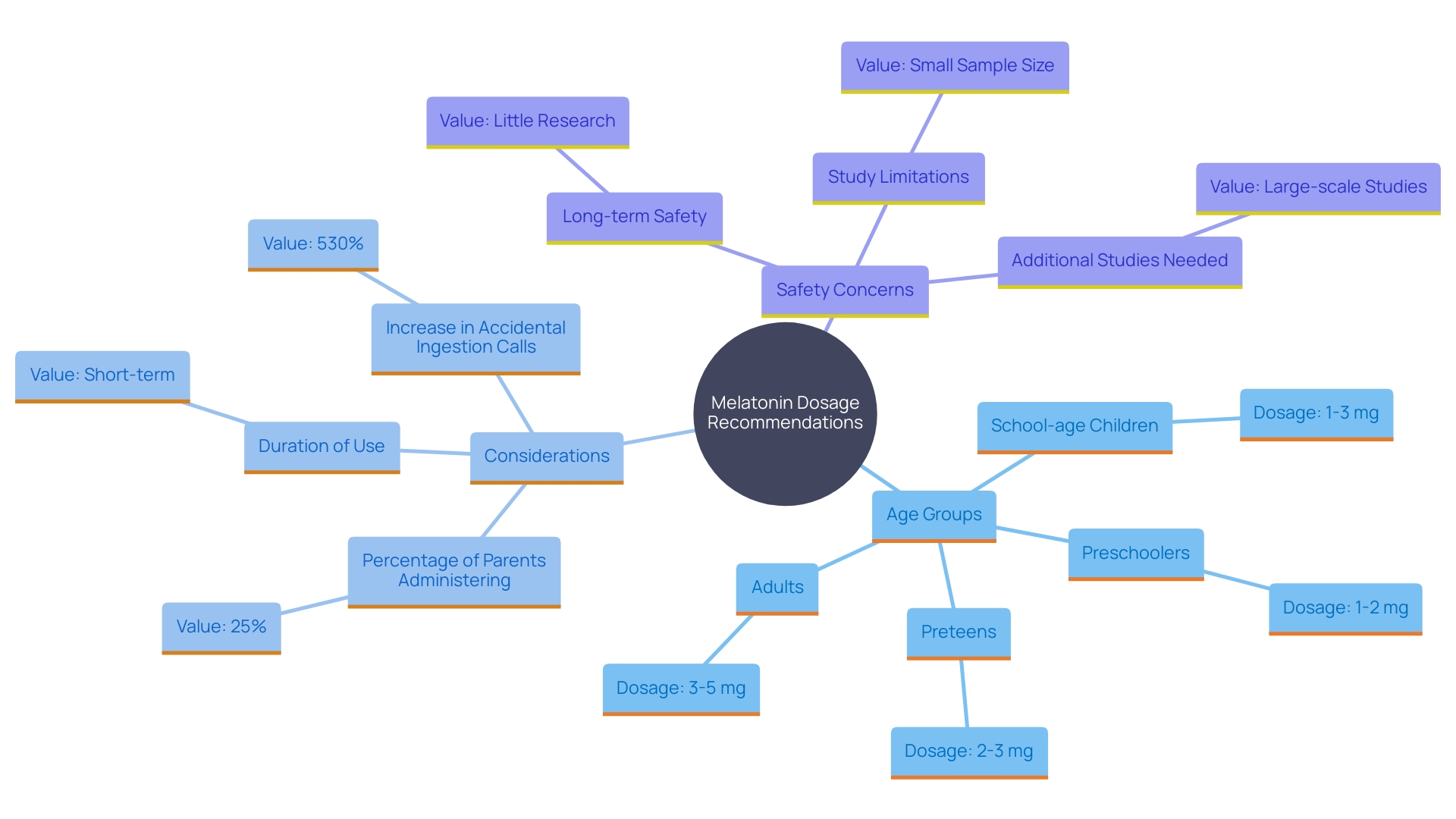
Melatonin Dosage for Children and Adolescents
For kids between 3 to 12 years old, a beginning dose of 1 mg of the sleep hormone is often suggested, which can be raised to 3 mg if necessary. Teenagers may need 3 to 5 mg, particularly if they experience insomnia or delayed circadian rhythm disorder. However, seeking a healthcare expert for tailored guidance is essential, as the sensitivity of young individuals to this substance differs greatly.
The American Academy of Pediatrics recommends that this supplement should only be utilized as a temporary remedy to assist young ones in sleeping. Recent research published in JAMA Pediatrics noted a significant rise in sleep aid usage among youngsters, with many parents reporting regular utilization. For example, pre-schoolers had a median usage duration of 12 months, primary school students for 18 months, and pre-teens for 21 months. A study conducted by the American Academy of Sleep Medicine discovered that approximately 46% of parents have administered sleep aids to individuals under 13 to assist with rest.
The Centers for Disease Control and Prevention reported a 530% rise in cases of a certain sleep aid consumption among minors from 2012 to 2021, with most occurrences being unintentional. This increase in usage, along with the fact that this substance is available over the counter in the US as a dietary supplement, highlights the significance of discussing its use with a healthcare provider to ensure safe and effective treatment.
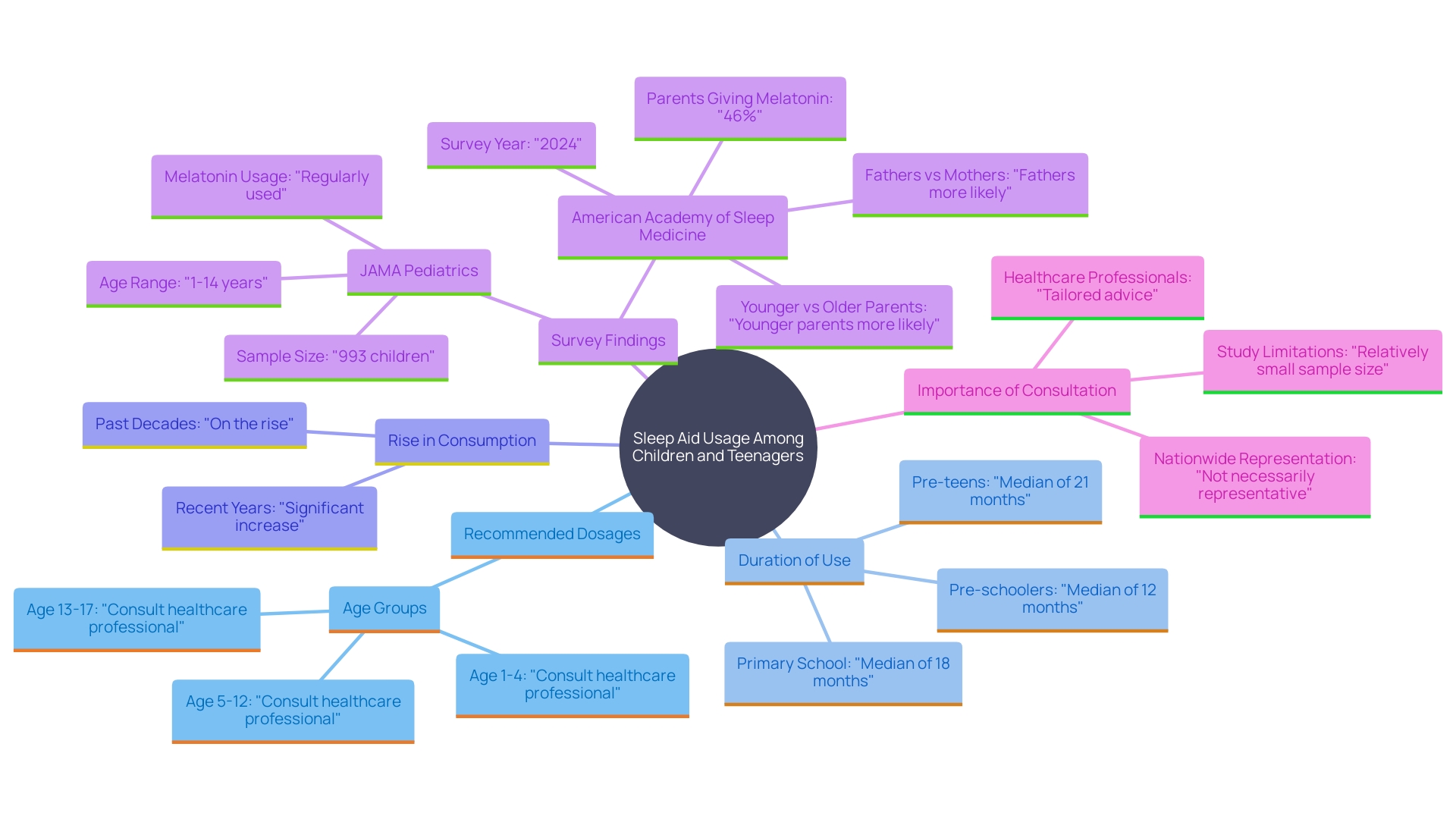
Safety Considerations for Melatonin Use in Children
While the hormone is generally regarded as safe for brief usage in young ones, prolonged effects are still being researched. The American Academy of Pediatrics suggests using this sleep hormone only as a temporary aid to help kids get rest. 'Recent research published in JAMA Pediatrics highlighted a significant increase in sleep aid usage among youngsters, with preschoolers taking it for a median of 12 months, primary school students for 18 months, and pre-teens for 21 months.'. This increase in usage is troubling, particularly considering that up to 20% of young people have utilized a sleep aid in the past 30 days, frequently on a daily basis.
In the United States, this sleep aid is available over the counter as a dietary supplement, unlike in many other countries where it is classified as a drug. This availability has led to its extensive usage, with surveys showing that approximately 46% of parents have provided a sleep aid to youngsters under 13 to assist them in resting. However, this common use raises concerns about potential interactions with other medications and the importance of using this substance for specific sleep issues rather than a general sleep aid.
Observing the young one's reaction to the sleep aid and addressing any worries with a pediatrician is essential. Experts highlight the necessity for additional investigation to establish the safety and efficacy of prolonged use of the sleep hormone in children. Until that time, caregivers should handle the use of sleep aids with care and focus on resolving fundamental rest concerns with suitable measures.
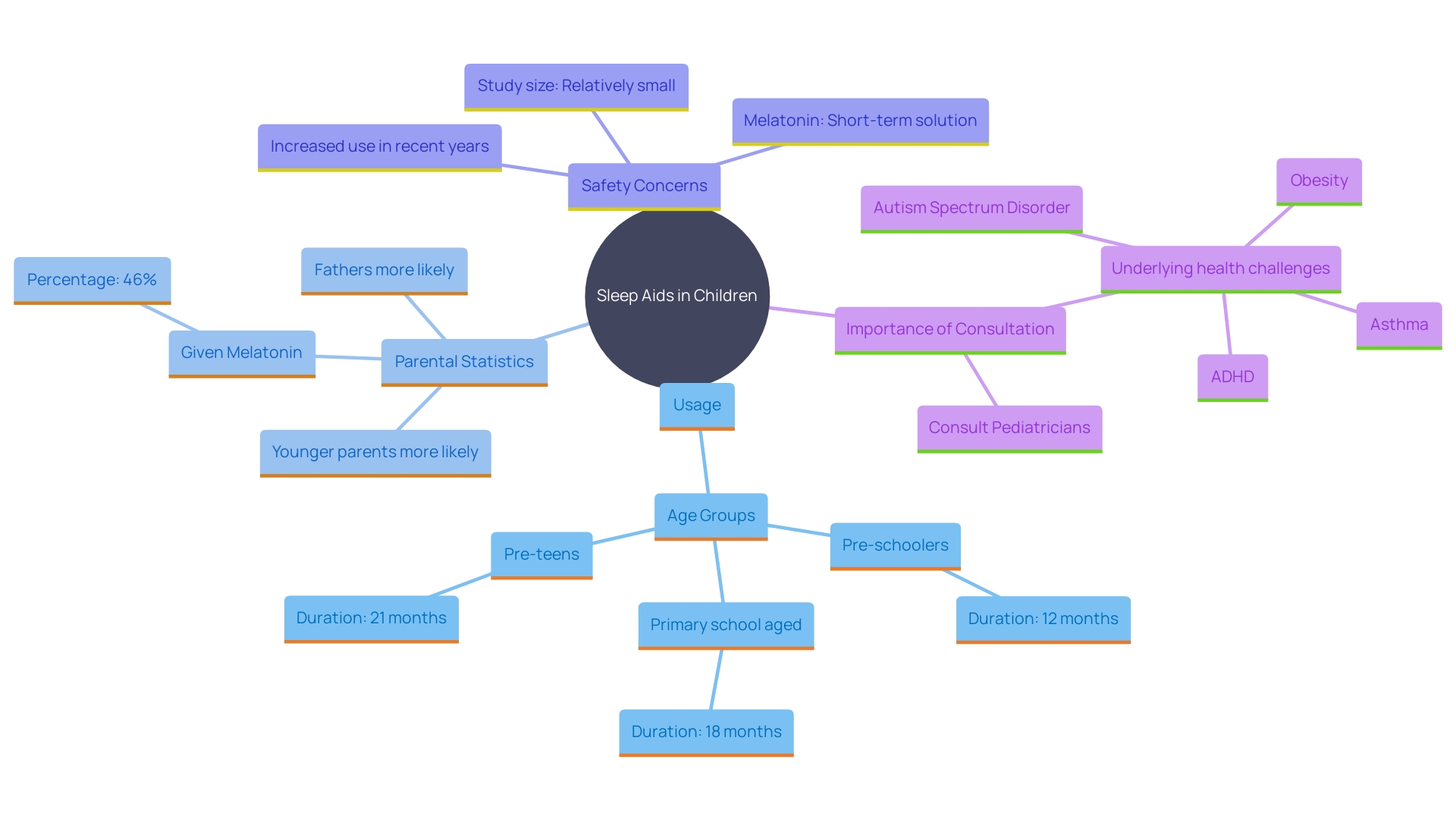
Potential Side Effects of Melatonin
While this hormone can be a useful aid for tackling rest problems, it is essential to be mindful of possible side effects. Commonly reported side effects include drowsiness, dizziness, and headaches. In some instances, young individuals might experience irritability or changes in mood. The American Academy of Pediatrics recommends using this hormone only as a temporary remedy to assist young ones in sleeping. Recent research from JAMA Pediatrics highlights a significant rise in the use of the supplement among youngsters, with some taking it regularly for extended periods. Surveys show that the use of this sleep aid among youngsters has increased from approximately 1% to 20%, with many youths taking it two to five days a week. Watching your offspring's response to the sleep aid and modifying the amount as needed can assist in reducing side effects. It's crucial to remember that while this sleep aid is available over the counter in the US, its composition can sometimes vary, leading to potentially dangerous amounts. Ensuring the proper dose and monitoring its effects can help maintain its safety and efficacy.
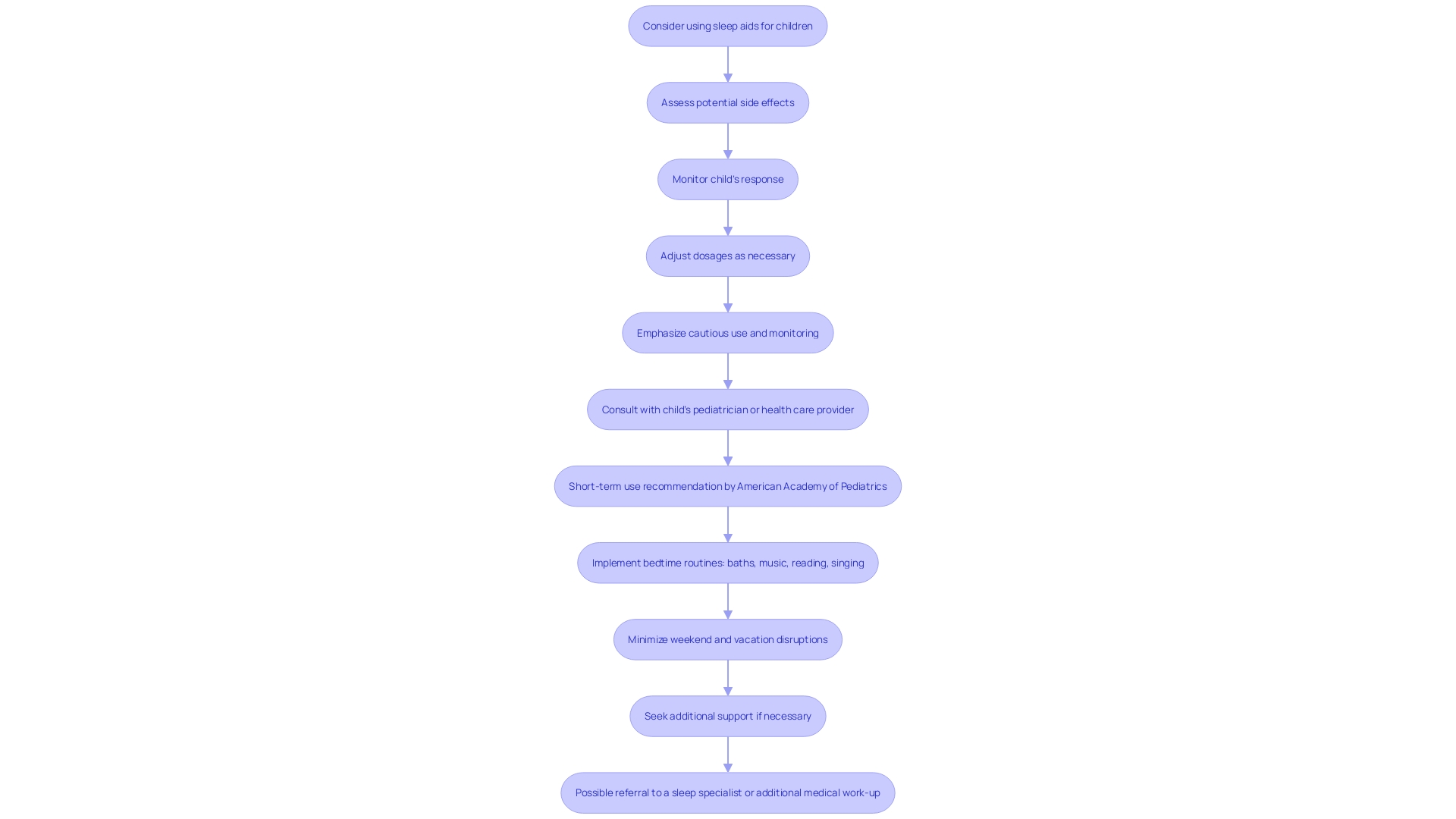
Special Precautions and Warnings for Melatonin Use
Some young individuals may need special precautions when utilizing this supplement, especially those with existing health issues or those on particular medications. Parents should be cautious with sleep aids in youngsters with hormonal disorders, seizure disorders, or those who are immunocompromised. Research in the journal JAMA Pediatrics highlights a significant increase in the use of sleep aid among youngsters, with pre-schoolers taking the supplement for a median of 12 months, primary school-aged individuals for 18 months, and pre-teens for 21 months. 'Despite its increasing popularity, the American Academy of Pediatrics advises using this supplement only as a temporary measure to assist children in getting rest.'. Additionally, an online questionnaire conducted by the American Academy of Sleep Medicine indicated that approximately 46% of guardians have administered a supplement to youngsters under the age of 13 to assist them in resting. Considering these trends and possible health effects, it’s essential to speak with a healthcare professional to confirm that this supplement is suitable for your young one.
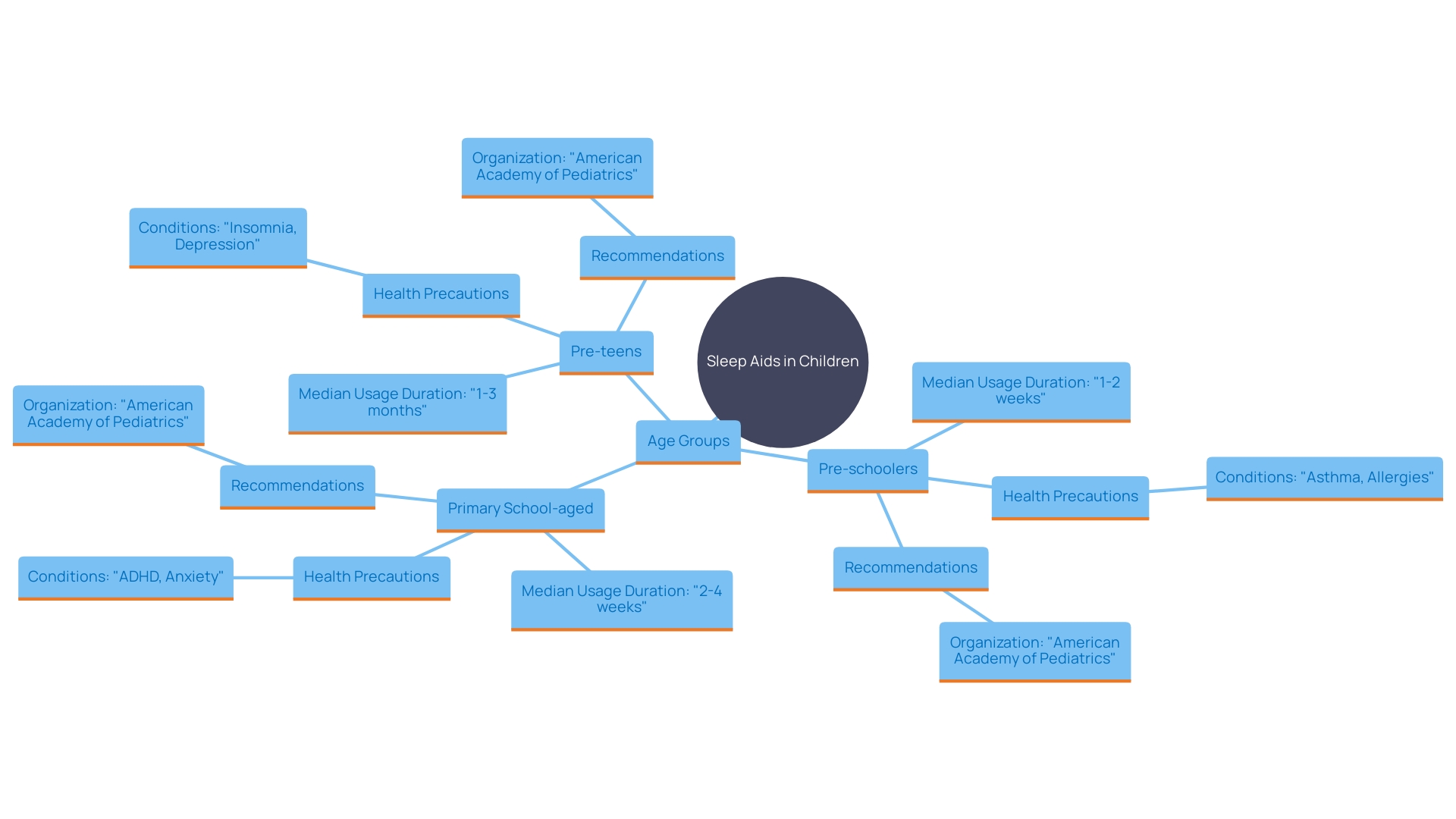
Choosing the Right Melatonin Product: Immediate vs. Prolonged Release
When selecting a sleep aid, take into account your offspring's particular rest requirements to decide if immediate-release or extended-release formulations are more appropriate. Fast-acting sleep aid assists young ones who require help dozing off rapidly, while extended-release alternatives are more suitable for individuals who have difficulty remaining asleep during the night. Research indicates that the use of this hormone is widespread among different age brackets, with gummies being the most popular form utilized (64.3%), followed by chewable tablets (27%), pills (6.3%), and liquid (2.4%). It's noteworthy that sleep hormone dosage tends to increase with age, with preschoolers typically receiving 0.5 mg, school-aged individuals 1 mg, and preteens 2 mg. The timing of administration remains consistent, usually 30 minutes before bedtime. Comprehending these elements can assist parents in making knowledgeable choices about the most efficient sleep aid for their offspring.
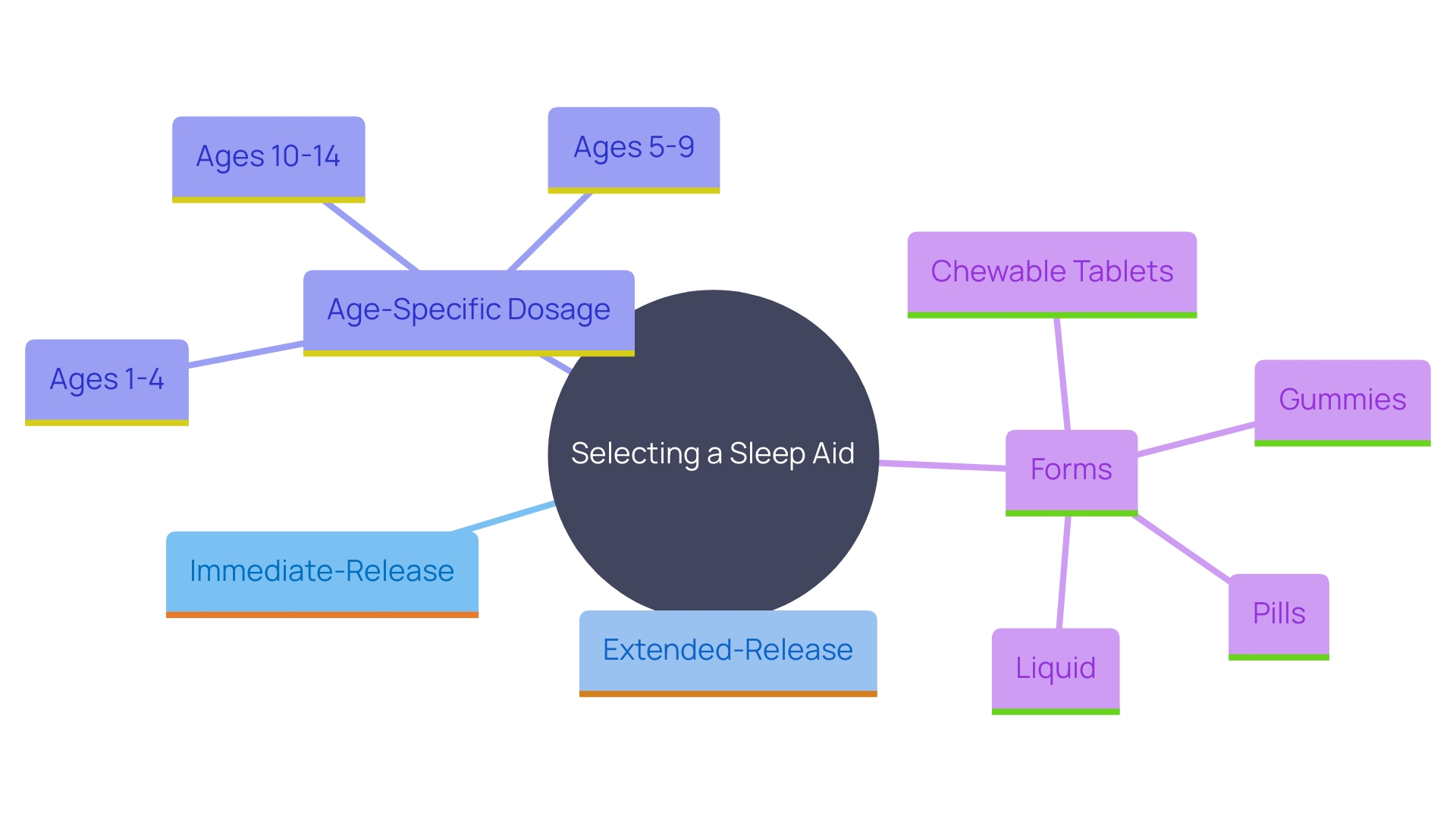
Consulting a Healthcare Professional Before Starting Melatonin
Before incorporating a sleep aid into your offspring's routine, consulting with a healthcare expert is essential. 'Recent studies, including research published in JAMA Pediatrics, indicate a significant rise in the usage of the supplement among youngsters, with parents often administering it regularly.'. A healthcare professional can provide tailored advice based on your dependent's health history and specific sleep challenges, helping to establish an appropriate dosage and duration of use. This is vital for guaranteeing safety and effectiveness, especially considering findings that a median of 46% of parents have administered the sleep aid to youngsters under 13. With the increased use of the sleep hormone, there have been growing concerns, including a 530% spike in reports of its ingestion in children between 2012-2021, according to the Centers for Disease Control and Prevention. Ensuring that a healthcare provider guides the use of melatonin can help manage these risks effectively.
Conclusion
The discussion surrounding melatonin usage in children brings to light the significant changes in melatonin production throughout various life stages. From infancy to adolescence, understanding these developmental shifts is crucial for parents navigating sleep challenges. The rising trend of melatonin supplementation among children reflects a broader concern about sleep quality, often exacerbated by modern lifestyle factors such as increased screen time.
However, while melatonin can be beneficial in the short term, its long-term effects remain uncertain, underscoring the need for careful consideration.
Guidelines for melatonin dosage emphasize starting with the lowest effective amount and adjusting as needed. For children, recommended dosages vary by age, and consulting healthcare professionals is essential for tailoring treatment to individual needs. The importance of using melatonin as a temporary aid rather than a permanent solution cannot be overstated, as ongoing use may mask underlying sleep issues that require different interventions.
Safety considerations are paramount, particularly given the rising incidence of melatonin ingestion cases among children. Parents should be vigilant about potential side effects and monitor their child’s response closely. Additionally, special precautions are warranted for children with specific health conditions, reinforcing the necessity of professional guidance.
Ultimately, informed decision-making, grounded in the latest research and expert recommendations, empowers parents to support their children's sleep health effectively and safely.




